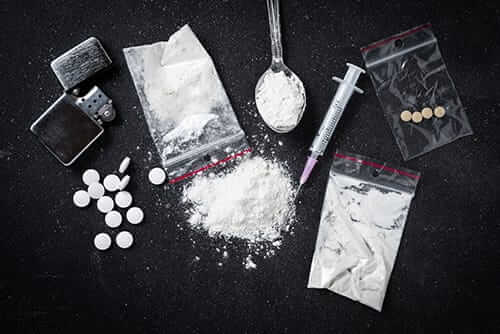
Any way you slice it, drug abuse is a serious threat to a person’s health and happiness. However, some types of drugs are milder than others. This can lead some people to believe that these drugs are harmless. But this isn’t true. In fact, research shows that starting off with experimentation involving “mild” drugs can lead to major problems. The following material will discuss gateway drugs and the problems they can cause.
Understanding the Gateway Drug Concept
Gateway drugs are milder drugs that can open the door to exposure to or experimentation with harsher substances. For example, many people may feel that nicotine and alcohol are relatively harmless. This idea is magnified by the fact that these substances are legal to purchase and use.
The fact that these substances are not only legal but also easily accessible and socially accepted can also create curiosity or cravings for drugs that aren’t legal and are much more dangerous. In addition, when someone abuses alcohol, prescription medications, or marijuana, they stop feeling as fearful of the potential harm of other substances. They also easily dismiss warnings to not risk their safety or well-being.
What are Examples of Common Gateway Drugs?
When it comes to the concept of gateway drugs, marijuana is often the first substance that comes to mind. Although the immediate effects of marijuana can be rather mild, this doesn’t mean the substance is harmless. Also, marijuana addiction can lead to the abuse of dangerous or potentially lethal drugs in some cases. In addition to marijuana, other common gateway drugs include tobacco and alcohol.
About Marijuana
Marijuana is far and away the most common substance that people consider when it comes to gateway drugs. Studies indicate that a large number of people that became addicted to more hardcore drugs tried marijuana at least once in their lives. In fact, a number of animal studies indicate that exposing young rodents to THC early increases their potential to develop addictions to other drugs. Early exposure to THC results in a number of changes in the neuropathways that can make them more susceptible to addiction.
About Tobacco
Tobacco shares a number of significant similarities with other drugs, especially in the way in which it is used and abused. According to the National Institute on Drug Abuse, tobacco use is the leading cause of death and disability in the United States. In addition, a number of studies have shown that people who begin using tobacco products at an early age have a greater chance of developing other substance abuse issues later in life such as an addiction to substances like alcohol, cocaine, or heroin.
About Alcohol
Like tobacco, alcohol is largely viewed as a gateway drug. But, just how commonly abused is alcohol? According to SAMHSA, in 2015, 20.8 million people over the age of 12 had a substance use disorder and 15.7 million of those people had an alcohol use disorder.
The likelihood of alcohol addiction is also greater found in those who are younger. The National Institute of Health has reported that people between the ages of 18 and 24 are more likely than older people to have a co-occurring alcohol use disorder and other drug use disorders.
Facts About Gateway Drugs
- People that smoke cigarettes as teens and even younger are up to 100 times more likely to smoke marijuana. Those same people are also significantly more likely to try illicit substances such as cocaine and heroin than people who do not smoke cigarettes.
- Of those teenagers and young adults who have used marijuana 3 to 10 times, 20% go on to use cocaine. Of those who use marijuana 100 or more times, 75% go on to use cocaine.
- Marijuana smokers who tried this drug for the first time before age 17 have up to a 6 times greater chance of developing a substance dependence problem.
- Teens who are heavy drinkers, meaning they consume at least five drinks on five occasions over 30 days, are 12 times more likely to use illegal drugs than those who do not drink.
- Nearly 90% of cocaine users had first smoked tobacco, drank alcohol, or used marijuana.
Is My Loved One Suffering from an Addiction?
Are you concerned about a family member or close friend? If so, it’s important to become acquainted with the following signs of an addiction. When it comes to what to look for, there are behavioral, psychological, and physical signs to keep an eye out for. Here are some examples:
Behavioral Signs
If you notice that there are changes in the way someone goes about their daily routine or even changes in the way they act during normal, mundane tasks, it might be a sign of an addiction. While behavioral changes might be harder to spot than physical ones, keep an eye out for any of the following behavioral changes:
- A change in the performance at work or school
- Missing work or school more frequently than normal
- Unexplained need for money or financial problems
- Engaging in secretive or suspicious behaviors
- Sudden change in friends, favorite hangouts, and hobbies
- Frequently getting into trouble when no prior history existed
Psychological Signs
Psychological changes associated with addiction occur when the chemical makeup of the brain physically changes. This can cause a person to act in ways that they have never acted before. Chances are, if you have spent a significant time around that person, you will start to notice these changes in their psyche pretty quickly. Things to look out for include:
- A lack of motivation, especially when they were always very motivated in the past
- Periods of strange or unusual hyperactivity
- Sudden mood swings including irritability or angry outbursts
- Appearing lethargic, fearful, anxious or even paranoid for no reason
- Unexplained change in personality or attitude
- Agitation or giddiness
Physical Signs
Physical symptoms of addiction refer to the way the disease manifests itself in physical appearance and function. These symptoms are by far the easiest to spot. Some common physical symptoms to keep an eye out for include:
- Sudden fluctuation in weight, such as rapid weight loss or gain
- Changes in daily patterns such as sleep or appetite
- Bloodshot eyes or pupils larger or smaller than usual
- Deterioration of physical appearance or personal grooming habits
- Unusual smells on the breath, body, or clothing
- Tremors, slurred speech, or impaired coordination
Finding an Effective Addiction Treatment Center
When it comes to navigating everything that goes along with the treatment process, it can be an overwhelming experience. Before treatment even begins, you will need to go through the detox process where you rid your body of all the harmful chemicals associated with the drugs and /or alcohol that your body has grown dependent on.
This can take up to 7 days and can be quite uncomfortable. Luckily, there are many designated facilities that specialize in the detox process that can help make it as comfortable as possible with the help of nutrition and 24-hour medical care.
After the detox process is completed, it’s time to enter either an inpatient or outpatient treatment program. Certain treatment facilities are better at treating certain addictions than others. So, doing some research and seeing what kind of success rate each facility has is important.
Also important is deciding between an inpatient and outpatient facility. While attending an outpatient center allows you to continue to live your regular daily life, that might not be the best way to get clean and sober. Chances are certain activities in your daily life helped cause you to go down the path you are currently on.
It is best to be honest with yourself when deciding between an inpatient and outpatient facility. Talking with a medical professional or even a therapist about which option is best for you might be helpful when it comes to choosing a treatment path.
With so many options out there, it might be difficult to choose the right option for you. It’s important to remember during all this that you are not alone. There are many people out there that want you to get the help that you need and lead a happy, sober life. From family and friends, to those working at the treatment and detox centers, everyone is on your side.
Outpatient Drug Rehab in North Carolina
At Crest View Recovery Center we know that battling addiction can be a scary time for everyone. That’s why it is our goal to not only help the person that is suffering from addiction, but also those that are closest to the person going through the addiction, including family, friends, and other loved one.
We offer an interesting form of reality therapy to help people recover from severe addictions. Offering holistic therapies in a peaceful setting makes the treatment process much easier. For example, our treatment options include:
Don’t let your addiction stop you from living your dreams. You can overcome addiction with help and support at CVRC. Contact us today to discover how Crest View Recovery Center can help you get on the right path now.


